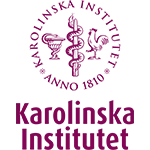Explore the credit course catalogue
3 Results

This course provides a solid ground in neuroscience, including cellular neuroscience, sensory and motor functions, and higher brain functions. It is intended for those lacking a basic neuroscience education. It runs in parallel with the Neuroscince course of the Bachelors programme in biomedicine. The course does not give regular course credits for doctoral students, but can be used to cover the demand of a grounding course in human physiology/pathology.

This course covers the concepts of:
- Mechanisms of axonal transport, neuronal cytoskeleton, neurite outgrowth, extracellular matrix, neurotrophic factors
- Mechanisms of synaptic transmission, vesicles, Snare’s, structure, synthesis and inactivation of neurotransmitters, neurotransmitterreceptors, signal transduction pathways; Pre and post synaptic signal modification
- Specific features of non-neuronal cells astrocytes, oligodendrocytes, microglia, Composition, synthesis and function of myelin, biochemistry and function of astrocytes and microglia; Pathobiochemistry of Alzheimer disease, prion diseases, leukodystrophies, polyglutamin diseases and multiple sclerosis

The course aims to introduce students to human sensory perception with a focus on clinical utility and research. The neurological and evolutionary principles underlying vision, hearing, smell, taste, touch, and additional methods of perception will be covered.
The course will introduce the historical and evolutionary context for our senses, so as to provide an understanding for why humans operate and behave the way we do. Beyond the traditional five senses of vision, hearing, taste, smell, and touch, we will discuss several other sensory modalities available to humans, including the vestibular system. The neurological principles guiding the integration of these senses will be outlined, with special reference to subconscious and conscious decision-making. These systems will then be tested through a series of practical experiments, giving students a chance to reflect on blind-spots in human perception and how to implement these in a scientific and clinical setting. Finally, common sensory pathologies will be discussed.


